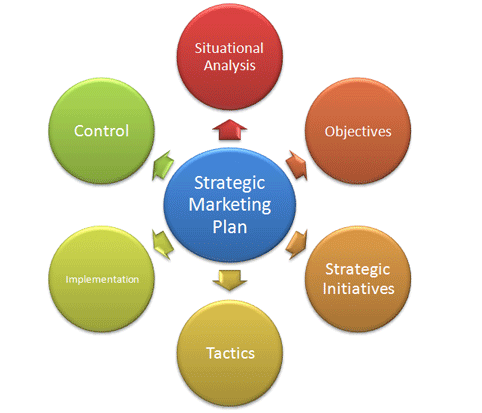The New Age of Small Business Marketing
Understanding Your Market Before Making a Move

1. The New Age of Small Business Marketing
In today’s marketplace, visibility is no longer just about budget—it’s about strategy. Small businesses are no longer playing catch-up; they are setting trends. The democratization of digital tools has leveled the playing field. In this new era, marketing isn’t just an optional function. It’s the bloodstream of the business.
2. Understanding Your Market Before Making a Move
Define Your Target Audience with Surgical Precision
Scattershot marketing is obsolete. Precision targeting is the new mantra. A clear understanding of demographics, psychographics, and behavior patterns arms small businesses with insight. Craft customer avatars that breathe—what do they value, where do they spend time online, what pain points can your product resolve?
Analyze Competitors Without Mimicking Them
Competitor analysis isn’t about cloning strategies—it’s about spotting gaps. Investigate what your competitors are not doing. Are they ignoring a particular segment? Do their customers complain about something consistently? Use that data to carve out a distinct position, not to become another echo in the market.
3. Branding: More Than Just a Logo
Crafting a Unique Brand Voice
Your brand voice is the tone in which your business speaks—online and off. Is it authoritative? Quirky? Empathetic? Consistency in this tone builds familiarity, which in turn builds trust. Choose your voice wisely and let it seep into every word your business publishes.
Visual Identity and Consistency Across Channels
Cohesive color palettes, typography, and design elements foster recognizability. Every visual element should reinforce your brand’s promise. This isn’t vanity—it’s memorability. Whether it’s a LinkedIn banner or an Instagram post, continuity is critical.
4. Content Marketing with Purpose
Blogging for Authority and Organic Reach
Blogs serve as digital real estate. Regular publishing of insightful, relevant articles not only informs but improves SEO rankings. Focus on evergreen content—timeless pieces that continue to draw traffic months after publishing. Answer questions your audience is already Googling.
Email Marketing That Actually Converts
The inbox is sacred space. Make your presence count. Gone are the days of generic email blasts. Today’s winners craft targeted, value-rich sequences that educate, delight, and convert. Use segmentation to serve hyper-relevant content that speaks to the receiver’s stage in the buyer’s journey.
5. Social Media: Pick Your Playground Wisely
Platform-Specific Strategies That Work
All platforms are not created equal. Instagram demands visual storytelling. LinkedIn rewards thought leadership. TikTok thrives on authenticity and humor. Select 1-2 platforms based on where your audience lives—not where your competition shouts the loudest.
Leveraging Micro-Influencers and User-Generated Content
Micro-influencers often deliver higher engagement than celebrity endorsements. Their audiences trust them. Pairing with creators who share your brand ethos creates organic buzz. Encourage customers to share their experiences and repurpose that content across your channels.
6. SEO for the Underdog
On-Page Optimization Made Simple
SEO doesn’t have to be enigmatic. Title tags, headers, alt text, internal links—get these right and you’re halfway there. Use tools like Yoast or SurferSEO to make optimization intuitive. Don’t keyword stuff—write for humans first, algorithms second.
Local SEO: Winning Your Backyard First
Google My Business is a powerhouse. Optimize your listing with current hours, services, and images. Encourage reviews. Use location-specific keywords in your website copy. Claiming local search dominance gives small businesses the visibility they crave within their immediate market.
7. Paid Advertising Without Burning Cash
Google Ads for the Budget-Conscious
Focus on long-tail keywords—less competition, more intent. Use ad extensions to increase click-through rates. Set daily budgets and monitor them with hawk-like attention. Google Ads isn’t a set-it-and-forget-it tool—it’s a living experiment.
Social Media Ad Campaigns That Don’t Feel Like Spam
Native-style ads blend seamlessly into the feed. Use compelling visuals and clear CTAs. A/B test everything: headlines, imagery, timing. Avoid hard sells. Instead, lead with value and let your product become the natural next step.
8. Referral and Loyalty Programs: The Silent Workhorse
Turning Customers into Advocates
Satisfied customers are your best marketers. Give them a reason to speak up. Simple referral programs—think discounts, cash, or exclusive perks—can turn a loyal buyer into a brand evangelist. Make the process frictionless and incentivizing.
Building Repeat Business Through Smart Incentives
Loyalty isn’t bought; it’s earned—and then rewarded. Tiered rewards programs, personalized thank-you notes, early access to products—these small gestures foster long-term relationships. Retention is often more profitable than acquisition.
9. Marketing Automation: Scaling Without Hiring
Tools That Save Time and Maximize Output
Automation is not impersonal when done right. Tools like Mailchimp, ActiveCampaign, and Buffer handle repetitive tasks so business owners can focus on growth. Set up drip campaigns, scheduled posts, and CRM workflows that nurture leads with minimal intervention.
Personalization at Scale
Customers crave recognition. Automation platforms allow dynamic content insertion—first names, location-specific offers, product recommendations. Personal touches at scale create the illusion of a one-on-one conversation, which boosts engagement.
10. Measuring Success and Adapting Fast
Key Metrics That Matter
Vanity metrics flatter. Actionable metrics empower. Track customer acquisition cost (CAC), lifetime value (LTV), conversion rates, bounce rates, and ROI per channel. Set benchmarks and evolve from anecdotal to analytical decision-making.
Pivoting with Agility in a Changing Landscape
The market shifts swiftly. Campaigns unperformed. Algorithms change. Be nimble. Use data as a compass, not an anchor. Test often. Iterate relentlessly. The best marketing strategies aren’t set in stone—they’re etched in pencil.
Conclusion
Effective marketing for small businesses isn’t about mimicking what works for the giants. It’s about crafting a strategy rooted in authenticity, agility, and clarity. When you understand your customer, define your brand, and execute with consistency, even modest budgets can make monumental impacts.

